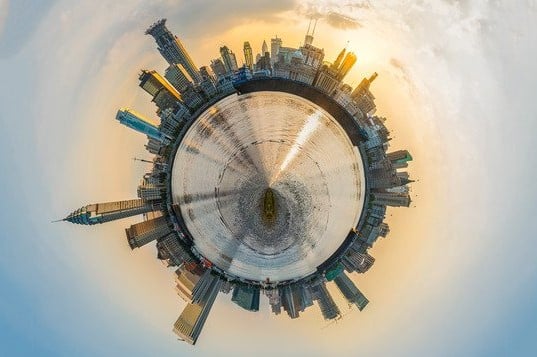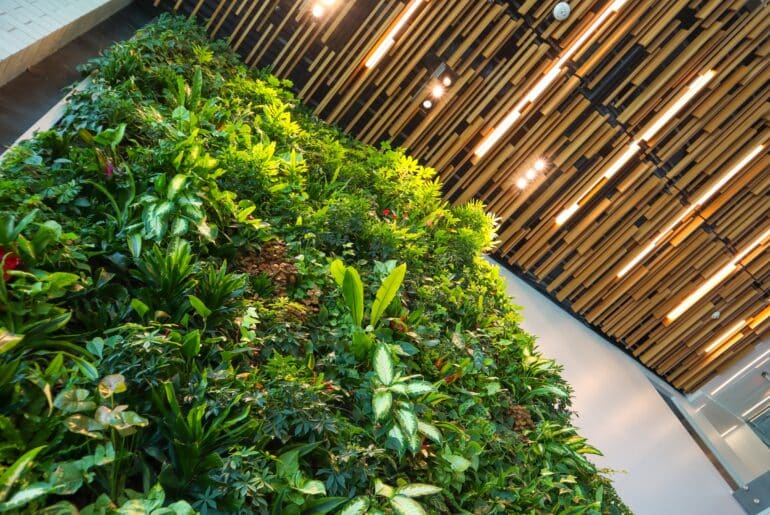Conferences inspire, connect, and catalyze, and this fall’s round of industry gatherings didn’t disappoint. If you missed any this season – or are looking for a nudge to attend one next time – find a dozen top insights from the industry’s brightest thought leaders below!
VERGE 18 | Oakland, CA
#1: The workplace of the future isn’t a workplace – it’s a community
Michiel Bakker, Director of Global Workplace Programs at Google, and Lindsay Baker, Head of Sustainability and Wellbeing at WeWork, discussed creating the workplace of the future. The verdict: it’ll focus a lot less on work, and a lot more on place. We’ve learned over time that all people work differently. Workplaces have moved from private office to cubicle to open office and now to a mix of all kinds of spaces that cater to every individual’s varying needs, all at the highest level of sustainable and human-centric design – and people still aren’t coming into the office to work. At the end of the day, great work is getting done wherever people want to do great work. So, as Google and WeWork suggest, let people be where they want to be. What’s more important from a physical workplace perspective is embodying the community of an organization. In this way, offices are shifting from primary workplaces to communities. Instead of a place you go for work, the workplace of the future is a place you go for inspiration, creativity, comfort, and collaboration, and when you’ve gotten your fill, feel free to go do work wherever you please.
#2: Net Zero Electricity does not equal Net Zero Energy
The Renewable Thermal Collaborative highlighted an important, often overlooked segment of Net Zero Energy: thermal energy. While we’re pouring immense effort into cleaning up the electricity grid and seeing impressive progress, there are other types of fuel that we need to be tackling with the same tenacity if we’re to truly achieve aggressive Net Zero Energy targets. The Collaborative supports organizations that are committed to scaling up renewable heating and cooling at their facilities and dramatically cutting carbon emissions. Member organizations include General Motors, L’Oréal USA, and Procter & Gamble. We encourage you to dive deeper and consider joining!
#3: Creating the waste stream dream team
Stok’s Katie Bachman moderated a session on the circular economy, bringing together three different stages of the construction waste lifecycle: deconstruction and reuse, recycling, and second material life. Moving toward a more comprehensive and streamlined solution, the panel uncovered that first, owners need to be educated and on board for the process to work from the outset. On the other end, recycling facilities need to start to tap into reuse networks themselves onsite to take more ownership of getting materials reused. This could potentially be incentivized by baking it into recycling facility certification requirements.
CoreNet Global Summit 2018 | Boston, MA
#4: Smart design satisfies everyone
A discussion around the modern workplace unfolded into how to align the expectations of employers and employees through smarter office design. As outlined in a session on sustainable and healthy workspaces, employers want lower costs, shorter lease terms, fewer commitments, a shift from fixed to variable costs, talent attraction and retention, and increased flexibility. Meanwhile, employees care most about privacy, personalized space, modern amenities, flexible working options, comfort and wellness, and community. A modern workspace must meet demands from both perspectives.
#5: Employee experience is paramount to tech tenants
In a new podcast, Stok’s Matt Macko and Jeremy Attema sat down with Robert Teed, VP of Real Estate at ServiceNow, to discuss how to service the changing needs of tech companies across their portfolios.
#6: Robots are critical to human-centric design
A smart buildings session conducted by United Technologies (UTC) asked the audience what the purpose of smart building technology is. Over half the attendees stated it’s to enhance the employee experience. Whether through IEQ sensors, personal mobile apps, utilization heat mapping, or otherwise, the critical role of tech in supporting wellness at the office continues to grow.
#7: High-performance design is optimized when value-aligned
Stok Founder Matt Macko accepted the CoreNet 2018 Sustainable Leadership Award on behalf of NRDC for the LEED Gold and Living Building Challenge Petal certified NRDC San Francisco office. The project’s streamlined and aggressive pursuit of the highest level of sustainable and healthy design, as well as full alignment with the organization’s values, make NRDC SF a blueprint for high-performance workplaces.
ULI Fall Meeting | Boston, MA
#8: The rise of urban revitalization
Throughout the US, in places you might least expect it, developers like Theaster Gates, Christopher Miner, and Todd Richardson are taking on new approaches to developing old buildings. The focus is far less on making a quick buck and far more on making a lasting positive impact on the community through culture, art, and creativity. Christopher and Todd recently completed Crosstown Concourse in Memphis, TN.
#9: The business case for healthy buildings is here, and it’s strong
Center for Active Design Executive Director Joanna Frank and International WELL Building Institute President Rachel Gutter discussed the rise of healthy building certifications to provide a growth path for continued emphasis on health and wellness in the built environment. The panel cited findings from Stok’s recent report on the Financial Case for High-Performance Buildings as evidence of the growing business case for human-centric design. For practical use, ULI’s Building Healthy Places Toolkit helps outline specific strategies for thoughtful, resilient, and healthy development.
Bioneers | San Francisco, CA
#10: Plants can imagine!
Monica Gagliano proved through scientific experiments with pea plants that plants can imagine! In a controlled environment, she turned on a fan prior to and during the time that a lightbulb (plant food) was on. With time, the plants started leaning toward the fan even when the light wasn’t turned on, because they learned to associate the fan with food. In her words, they anticipate, and thus imagine the food. It served as an exciting reminder that we still have so much to learn from the natural world!
#11: Google uses tech partnerships for conservation
Rebecca Moore shared Google’s key partnerships to address global climate change. Google Earth’s partnership with Global Fishing Watch will utilize satellite technology to identify and catch illegal fishing operations. Also teaming up with World Wildlife Fund, the partnership will use micro cameras with facial recognition to stop poachers of endangered species in Africa.
#12: Leo leads an Oscar-worthy actionable climate plan
The Leonardo DiCaprio Foundation (LDF) Executive Director Justin Winters shared how LDF is creating a map of the world’s 570 ecoregions, along with accompanying proposals and steps to preserve 50 percent of the world’s terrestrial and oceanic ecosystems by 2050. This action is critical to stay below the earth’s 1.5°C warming threshold ominously outlined in the latest IPCC report released October 2018.
Heading to an upcoming industry conference? Chances are we are too. Drop us a line to connect there in person!



